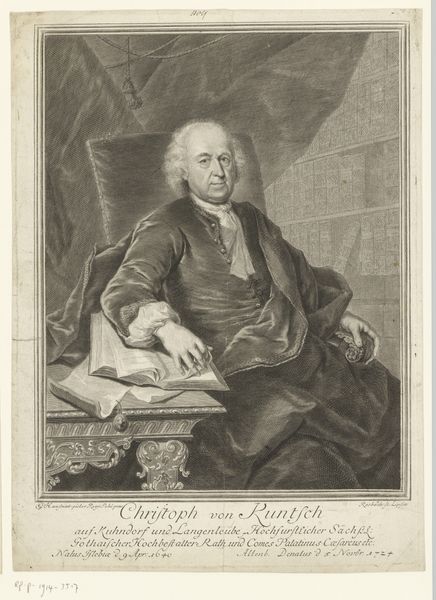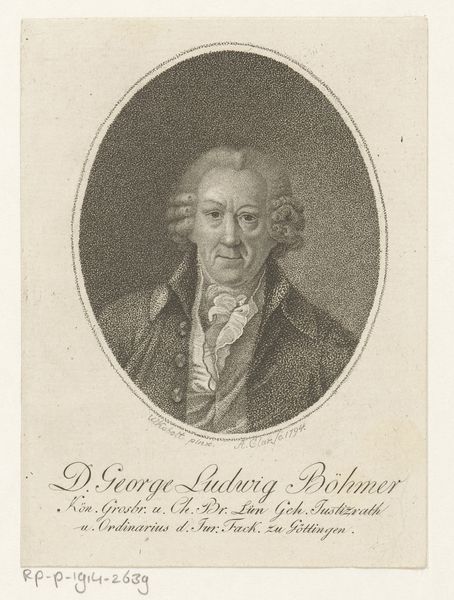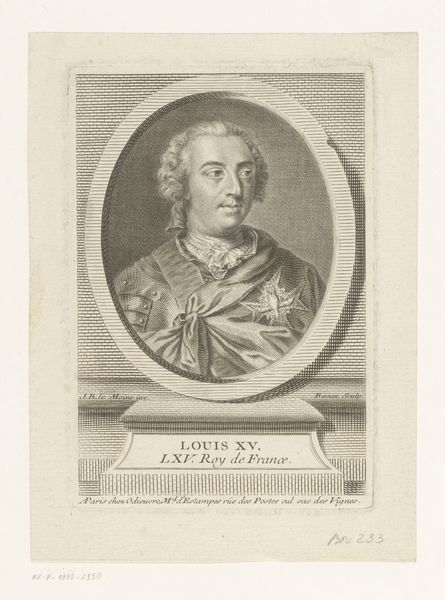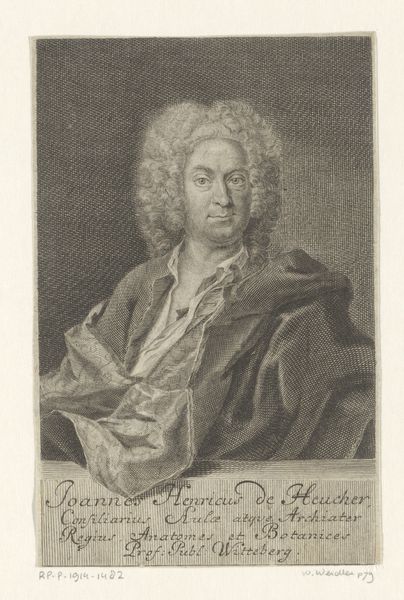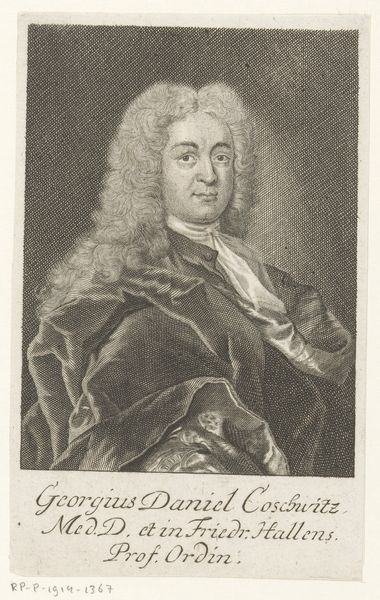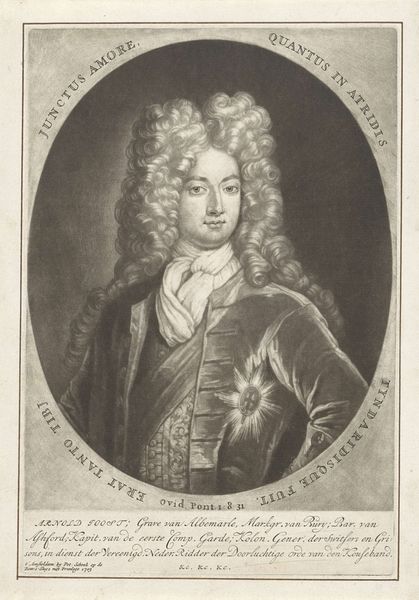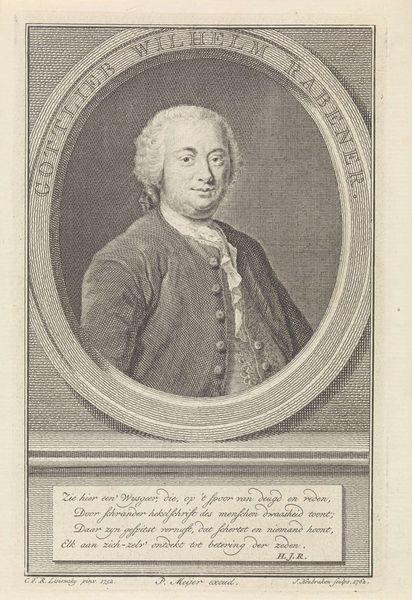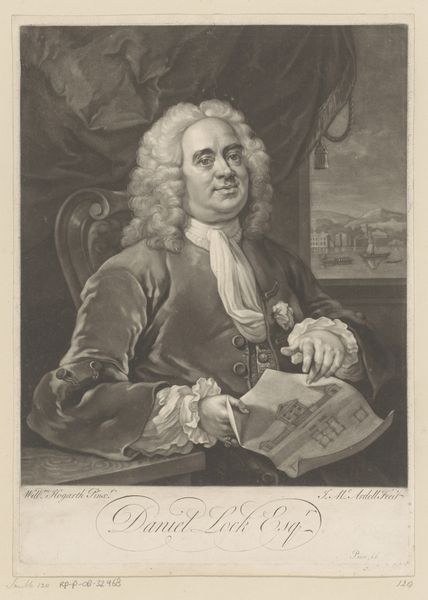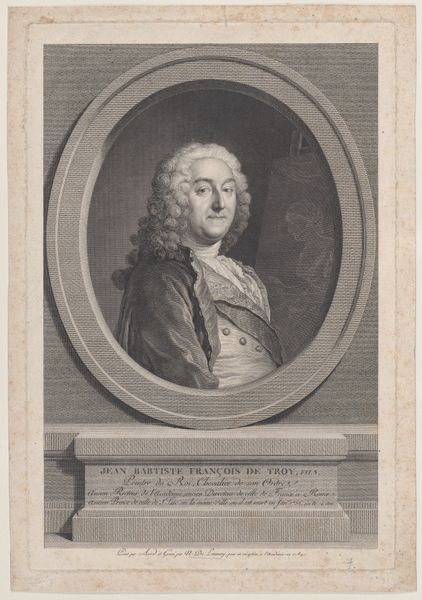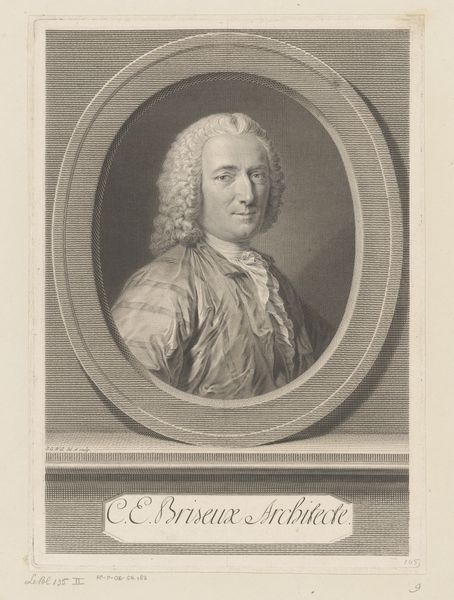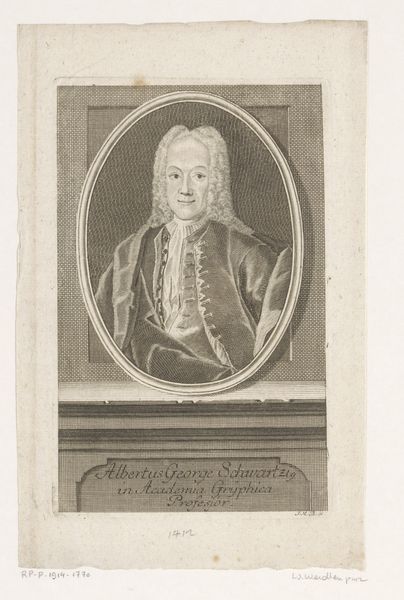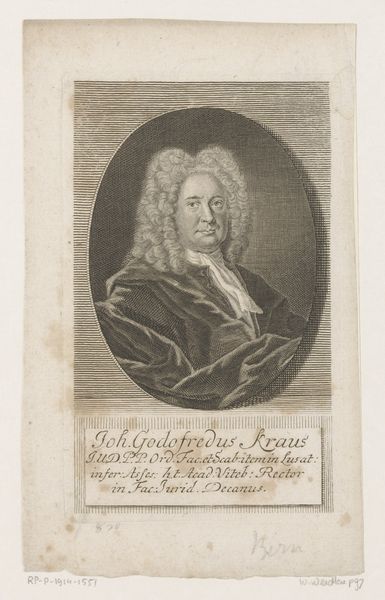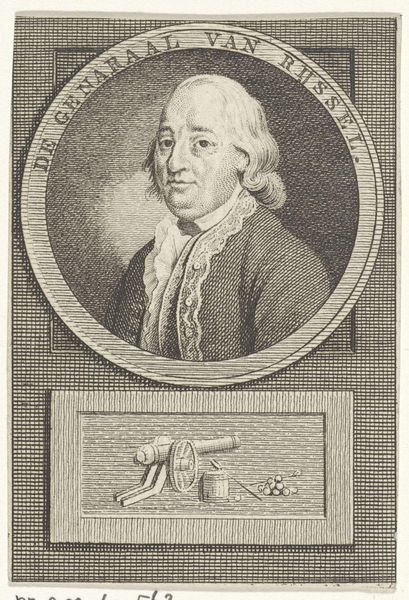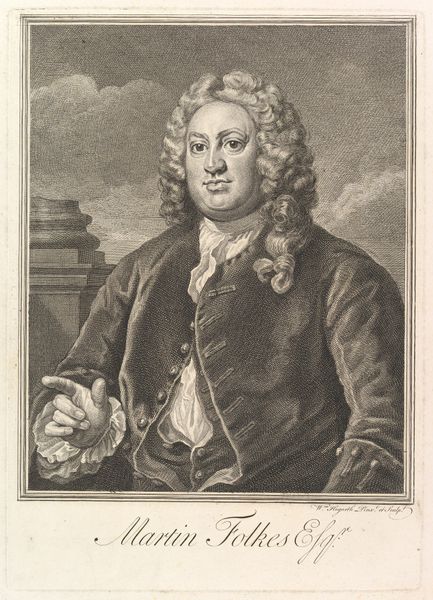
print, engraving
#
portrait
#
baroque
# print
#
old engraving style
#
portrait drawing
#
engraving
Dimensions: height 225 mm, width 162 mm
Copyright: Rijks Museum: Open Domain
Curator: What immediately strikes me about this piece is the way the light catches the subject’s wig—almost as if his intellect is radiating outwards. There's an interesting weight in the eyes, a story there that you want to know more about. Editor: It’s certainly a striking portrait. We’re looking at an engraving by Pietro Monaco titled "Portret van schilder Giovanni Battista Pittoni," created sometime between 1717 and 1763, currently held in the Rijksmuseum collection. Knowing that it’s a depiction of the Venetian painter Giovanni Battista Pittoni really helps contextualize that confidence you observed. Curator: The choice of medium is itself symbolic, isn’t it? An engraving implies precision, a desire for replicability, to disseminate his image as an artist and intellectual. It fits well into a Baroque-era fascination with capturing likeness and status. But also, to reproduce the painting and ensure its impact lasts over the passage of time. Editor: Absolutely, and prints like these played a vital role in constructing and disseminating artistic reputations. Consider how portrait engravings like this one circulated within artistic and intellectual circles. They helped build Pittoni’s public persona, his brand as a leading painter. Curator: The face is the anchor of meaning. The gaze, the set of the mouth…these elements work together to project an aura of intelligence and perhaps even a touch of self-satisfaction. The mole provides an asymmetrical detail and realism, offsetting the calculated elegance of the Baroque styling. Editor: I think this image's historical and social context speaks volumes, right down to the engraved inscription and the network of artists involved in its production—Bartolomeo Nazari as the original painter, Monaco as the engraver, and then Alessandri and Scattaglia listed on the print too. It emphasizes how the creation and circulation of imagery during that period was tied to patronage and collaborative work within particular circles. Curator: Looking at the layers of symbolism that make up his presence – I start to contemplate legacy itself, both the subject's legacy and that of the artist creating the portrait, knowing their creations will reverberate and accrue significance as time marches on. Editor: It really shows how images are political, establishing status and shaping our collective memory of artists such as Pittoni and the world they occupied. Seeing such a clear image is, in itself, a potent reminder of how powerful these depictions can be and the circles of patronage surrounding such images at the time.
Comments
No comments
Be the first to comment and join the conversation on the ultimate creative platform.
